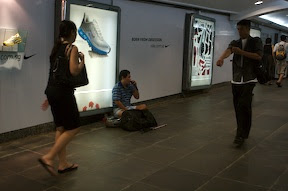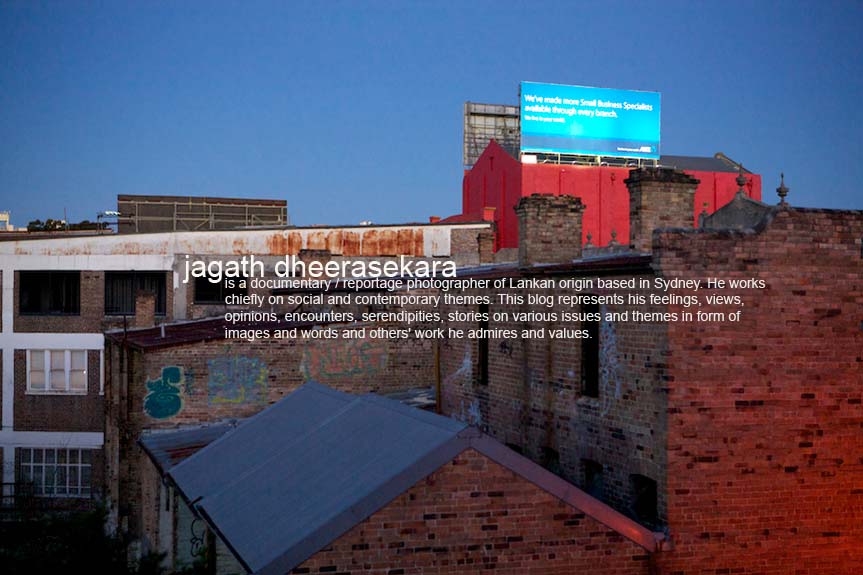

Ruchi getting a hair cut from Konda Seeya. I took this black and white photo quite some time back. This was exhibited at Royal Photographic, London.
Konda Seeya is old now. Nilvala has told me he had cut her hair as well. Have heard amma saying he used to cut Nilvala's father's hair. He is three generations young. Below is Milith getting a cut from Konda seeya. He tells me stories. I enjoy inviting him to lunch with us. Old age takes the control of the wheel fully. Never gives it back. Sacry. Universal truth.
"Growing old is inevitable. Growing up is optional" i saw this sticker pated on a cupboard in the Recovery ICU rest room, National Hospital, Colombo.
....................
Thesaurus
old adjective 1 old ladies elderly, aged, older, senior, advanced in years, up in years; venerable; in one's dotage, long in the tooth, gray-haired, grizzled, hoary; past one's prime, not as young as one was, ancient, decrepit, doddering, doddery, not long for this world, senescent, senile, superannuated; informal getting on, past it, over the hill, no spring chicken. antonym young. 2 that old barn is an eyesore dilapidated, broken-down, beat-up, run-down, tumbledown, ramshackle, decaying, crumbling, disintegrating. antonym new, modern. 3 old clothes | an old sofa worn, worn out, shabby, threadbare, holey, torn, frayed, patched, tattered, moth-eaten, ragged; old-fashioned, out of date, outmoded, démodé; castoff, hand-me-down; informal tatty. antonym new, fashionable. 4 a collector of old cars | the city's old architecture antique, historic, vintage, classic; veteran. antonym new, modern. 5 she's old for her years mature, wise, sensible, experienced, worldly-wise, knowledgeable. antonym young, inexperienced. 6 in the old days bygone, past, former, olden, of old, previous, early, earlier, earliest; medieval, ancient, classical, primeval, primordial, prehistoric, antediluvian. antonym modern, recent. 7 the same old phrases hackneyed, hack, banal, trite, overused, overworked, tired, worn out, stale, clichéd, platitudinous, unimaginative, pedestrian, stock, conventional; out of date, outdated, old-fashioned, outmoded, archaic, obsolete, antiquated, hoary; informal old hat, corny, played out. antonym fresh, innovative. 8 an old girlfriend former, previous, ex-, one-time, erstwhile, once, then; formal quondam. antonym new. 9 the town has held tight to its old ways time-honored, old-time, long-established, age-old; familiar, established; customary, usual, routine, habitual; historic, folk, ancestral, old-world. antonym modern, progressive.PHRASES old age I was not prepared to deal with my father's old age declining years, advanced years, age, agedness, oldness, winter/autumn of one's life, senescence, senility, dotage. antonym youth, childhood. old person the old people in this community deserve our support senior citizen, senior, elder, retiree, geriatric, dotard, golden ager; crone; Methuselah; septuagenarian, octogenarian, nonagenarian, centenarian; informal old-timer, oldie, oldster, codger. antonym youngster, child.THE RIGHT WORDAlmost no one likes to be thought of as old, which means having been in existence or use for a relatively long time (: an old washing machine). But those who are aged, indicating a longer life span than old and usually referring to persons of very advanced years, are often proud of the fact that they have outlived most of their peers. Children may exaggerate and regard their parents as ancient, which means dating back to the remote past, often specifically the time before the end of the Roman Empire ( | ancient history), and their attitudes as antediluvian, which literally means dating back to the period before the biblical Great Flood and Noah's ark ( | an antediluvian transportation system). Some people seem older than they really are, simply because their ideas are antiquated, which means out of vogue or no longer practiced ( | antiquated ideas about dating). Things rather than people are usually described as archaic, which means having the characteristics of an earlier, sometimes primitive, period ( | archaic words like “thou” and “thine”). Obsolete also refers to things, implying that they have gone out of use or need to be replaced by something newer ( | an obsolete textbook; a machine that will be obsolete within the decade).
























.jpg)
.jpg)
.jpg)
.jpg)
.jpg)
.jpg)
.jpg)
.jpg)






